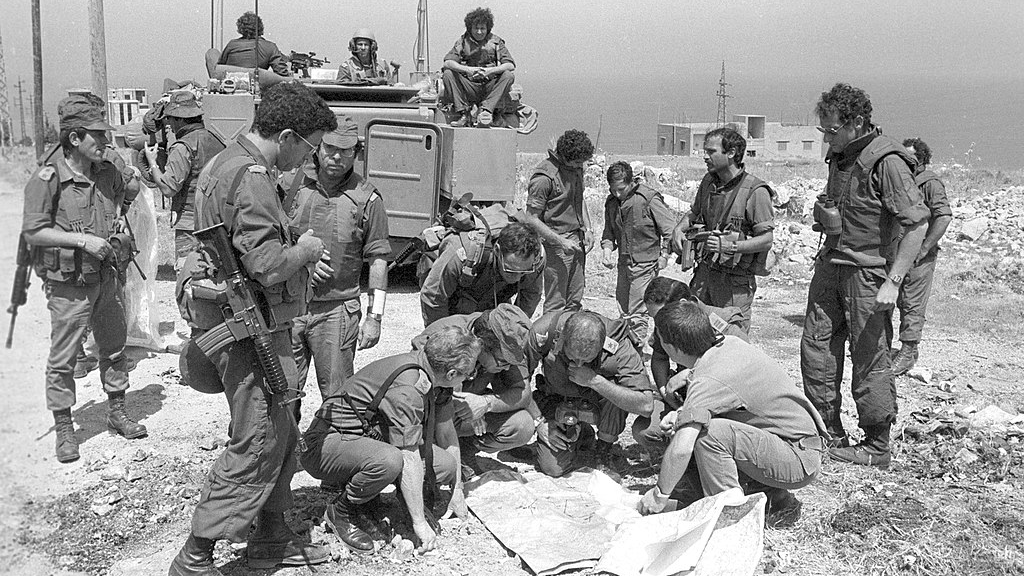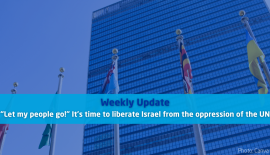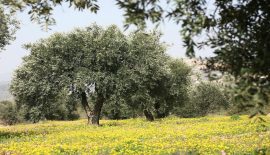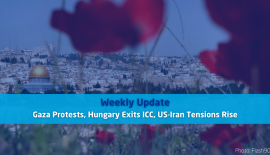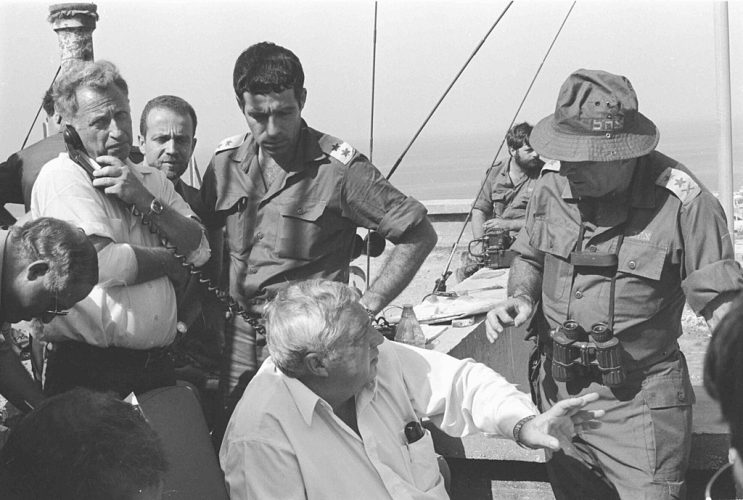Operation Peace for Galilee
For many, memories of the early 1980s include nightly news articles on television bringing updates of war in Lebanon. Footage of injured troops and buildings hit by rockets still echo.
Operation Peace for Galilee – later known as the First Lebanon War – began in 1982, as Israeli leaders desperately sought an end to a massive escalation in bombings, rocket attacks, and violence wreaked upon the Israeli population by terrorist organisations including the PLO, PFLP, and the PDFLP. Civil war and instability in Lebanon became the perfect background for the PLO to set up and base its operations against Israel.
While the PLO fought to establish its dominance in Lebanon, members of the Warsaw Pact announced their support of the PLO – and opposition to Israel. As East Germany in particular began to strengthen its support for Arafat’s regime, many around the world felt tensions rise as something of an extension to the Cold War played out. With the financial and political support of the Warsaw Pact nations – and their military supplies – the PLO and its associated insurgents steadily increased their attacks on Israel. The might of the ‘East’ was soon to be tested as it again went up against the United States-backed Israel. Whilst not the first time prowess of East vs West military technology had been contested, the looming conflict became perhaps the most visible display. Many commentators attribute the obvious military and technical superiority of the West during the war as a key factor in the subsequent demise of the Warsaw Pact.
Although the military operation began in June 1982, the roots of the inciting violence were clear much earlier. In March 1977, the Palestine National Council voted overwhelmingly to continue the armed struggle against Israel and rejected recognition of Israel, as well as Security Council Resolution 242 of 1967 as a basis for peace and negotiation. A week later Israel’s UN Ambassador Chaim Herzog addressed the UN Security Council, reminding that the PLO Charter still called for the expulsion of the bulk of the Jewish population and for the destruction of the State of Israel. Herzog reminded the Security Council delegates that “The negation of Israel’s right to exist is a principle accepted by all groupings within the PLO”, and of the PLO assertion that “the claim of a historical or spiritual tie between Jews and Palestine does not tally with historical realities” – ridiculous and unsupportable fiction that remains a favourite amongst enemies of Israel. It was the collapse of a UN- brokered ceasefire that saw Operation Peace for Galilee initiated.
Palestinian terrorists had entrenched themselves in Southern Lebanon where they set about creating an informal state- within-a-state. Operating from bases established there, terrorist groups were deployed to bring death and misery in Israel and abroad. Tension along Israel’s northern border increased during 1981 as barrages of Katyusha rockets and artillery were fired at civilian targets in Israel’s northern Galilee region. On 3 June 1982, Israeli Ambassador Shlomo Argov was shot and critically wounded near his home in London. The next day Israeli jets bombed PLO ammunition depots and training bases in southern Lebanon. This was followed by a massive PLO bombardment against Israel’s northern settlements, causing extensive damage and loss of life.
On 6 June 1982, the IDF launched Operation for Peace of Galilee.
Effectively a war of two parts, the first was a conventional war lasting from 6 June to 23 August 1982, when Arafat’s PLO and its terrorists were expelled from Beirut. The second part, lasting the next three years, was a war against the terrorists.
Whilst the ineffectiveness of the weak Lebanese government and an inability to negotiate a solid peace led to a long, drawn-out conflict, there were some spectacular moments that boosted the moral of war-fatigued Israelis, grieving the loss of thousands of soldiers and civilians. Within hours, the IAF destroyed the Syrian SAM (surface-to-air missile) system, ultimately destroying over 90 Syrian fighter aircraft with no IAF losses. The brand-new Israeli-made mini-RPV (remotely piloted vehicle) played a massive role, in a conflict that confirmed Israeli air superiority in the area.
Although not achieving the lasting peace sought by Israel, Operation Peace for Galilee did result in a strip of patrolled land – a buffer or ‘trip wire’ – that allowed Israel at least some warning of impending attacks.
40 years after the war, echoes of terror attacks and the painful loss of sons and daughters serving in the IDF remain a constant reminder of those, literally on Israel’s doorstep, who seek the total annihilation of the Jewish nation.
